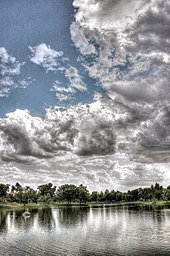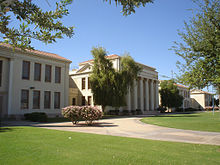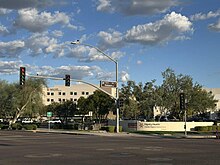

Healthcare professionals, including doctors, nurses, and other medical staff, have a profound duty of care towards their patients. This duty of care is a legal and ethical responsibility that requires healthcare providers to act in the best interest of their patients, ensuring their safety and well-being at all times.
The duty of care in medicine requires healthcare professionals to provide competent and compassionate care to their patients, taking into consideration their individual needs and circumstances. This means that healthcare providers must treat each patient with respect, dignity, and empathy, while also adhering to the highest standards of medical practice.
In addition to providing quality care, healthcare professionals are also responsible for maintaining patient confidentiality and privacy. This includes safeguarding sensitive medical information and only sharing it with authorized individuals or entities. Healthcare providers must ensure that patient data is protected from unauthorized access or disclosure to protect patient privacy rights.
Furthermore, healthcare professionals have a duty to communicate effectively with their patients, ensuring that they understand their diagnosis, treatment options, and any potential risks or side effects associated with their care. Patients have the right to be fully informed about their healthcare decisions so they can make informed choices about their treatment.
Overall, the duty of care in medicine is a fundamental principle that guides the actions of healthcare professionals in providing safe, effective, and compassionate care to their patients. By upholding this duty of care, healthcare providers demonstrate their commitment to serving the best interests of those under their care and promoting trust between patients and medical professionals.
As healthcare professionals, we have a duty of care to our patients that goes beyond simply administering treatment. We have a responsibility to ensure the safety and well-being of those under our care at all times.
Maintaining patient safety is crucial in order to provide effective and ethical medical care. This includes taking measures to prevent harm, errors, and injuries that could potentially occur during medical procedures or treatments. By being vigilant and proactive in assessing risks and implementing safety protocols, we can minimize the likelihood of adverse events and promote positive outcomes for our patients.
Furthermore, prioritizing patient well-being involves not only addressing physical health concerns but also attending to their emotional and psychological needs. Building trust, fostering open communication, and showing compassion are essential components of providing high-quality patient care. By treating each individual with respect and dignity, we can create a supportive environment that promotes healing and recovery.
In essence, upholding the duty of care in medicine requires a commitment to excellence in all aspects of patient care. By placing the safety and well-being of our patients at the forefront of our practice, we demonstrate our dedication to serving as advocates for their health and overall quality of life. Ultimately, by fulfilling our obligations as healthcare providers, we contribute to building a healthcare system that is grounded in compassion, integrity, and excellence.

Seeking legal representation for medical malpractice claims is of utmost importance in ensuring that your rights are protected and that you receive the compensation you deserve.. Dealing with the aftermath of a medical error can be overwhelming, both emotionally and financially.
Posted by on 2024-11-18

Medical malpractice law is a complex and ever-evolving field that aims to protect patients from negligent or harmful medical care.. In recent years, there have been several noteworthy developments and trends in this area of law in Chandler. One significant trend is the increasing use of alternative dispute resolution mechanisms, such as mediation and arbitration, to resolve medical malpractice claims.
Posted by on 2024-11-18
Failing to uphold the duty of care in the field of medicine can have serious consequences for both patients and healthcare providers. When healthcare professionals neglect their responsibilities towards their patients, it can lead to a range of negative outcomes.
One potential consequence of failing to uphold the duty of care is medical malpractice lawsuits. Patients who have been harmed or injured due to negligence on the part of a healthcare provider may choose to take legal action against them. This can result in costly legal fees, damages, and loss of reputation for the healthcare provider.
Another consequence is harm to the patient's health. When healthcare professionals fail to provide appropriate care or make errors in treatment, patients may suffer from worsened health conditions, complications, or even death. This not only impacts the individual patient but also their families and loved ones.
Furthermore, failing to uphold the duty of care can damage trust between patients and healthcare providers. Patients rely on their doctors and nurses to provide them with quality care and support during times of illness or injury. When this trust is broken due to negligence or misconduct, it can be difficult to rebuild and can have long-lasting effects on the patient-provider relationship.
In conclusion, upholding the duty of care in medicine is crucial for ensuring the safety, well-being, and trust of patients. Failing to do so can result in legal consequences, harm to patient health, and damage to professional reputations. Healthcare providers must always prioritize their duty of care in order to provide the best possible outcomes for their patients.

The examination of strategies for effectively fulfilling duty of care in medical practice is crucial in ensuring the well-being and safety of patients. Duty of care in medicine refers to the legal and ethical obligation that healthcare professionals have towards their patients, which includes providing competent and appropriate care, maintaining confidentiality, and advocating for their best interests.
One important strategy for fulfilling duty of care is ensuring clear communication with patients. This involves explaining treatment options, risks, and potential outcomes in a way that is easily understandable to the patient. By fostering open and honest communication, healthcare providers can build trust with their patients and empower them to make informed decisions about their care.
Another key strategy is staying up-to-date on current medical guidelines and best practices. Medical knowledge is constantly evolving, so it is essential for healthcare professionals to regularly engage in continuing education and professional development to ensure that they are providing the most effective and evidence-based care to their patients.
Additionally, practicing within one's scope of expertise is crucial for fulfilling duty of care. Healthcare providers should recognize their own limitations and seek consultation or refer patients to specialists when necessary to ensure that they are receiving the highest quality of care possible.
Overall, by implementing these strategies and remaining committed to upholding duty of care in medical practice, healthcare professionals can ensure that they are providing safe, effective, and compassionate care to their patients.
Duty of care in medicine is a crucial aspect of healthcare, ensuring that patients receive the highest quality of care and attention from medical professionals. One real-life example of duty of care in action is the case of a doctor who diligently follows up with a patient after a procedure to monitor their progress and address any concerns.
In this scenario, the doctor demonstrates their commitment to the well-being of their patient by taking the time to check in regularly and provide support as needed. By doing so, the doctor not only fulfills their professional responsibility but also shows empathy and compassion towards the patient's recovery journey.
Another example of duty of care in medicine can be seen in the case of a nurse who goes above and beyond to ensure that all necessary precautions are taken to prevent infections in a hospital setting. This includes strict adherence to hygiene protocols, proper disposal of medical waste, and educating patients on how to protect themselves from potential risks.
By prioritizing patient safety and well-being, the nurse exemplifies the importance of duty of care in healthcare settings. Their dedication to upholding ethical standards and best practices contributes to creating a safe and supportive environment for patients to receive treatment.
Overall, these real-life examples highlight how duty of care plays a vital role in ensuring that patients receive optimal care and support from healthcare professionals. By prioritizing patient safety, well-being, and overall satisfaction, medical professionals demonstrate their commitment to ethical practice and excellence in healthcare delivery.
Chandler, Arizona | |
|---|---|
City | |
 Aerial view of Chandler | |
 Location in Maricopa County, Arizona | |
| Coordinates: 33°18′N 111°50′W / 33.300°N 111.833°W | |
| Country | United States |
| State | |
| County | Maricopa |
| Founded | May 17, 1912 |
| Government | |
| • Type | Council-Manager |
| • Mayor | Kevin Hartke[1] |
| Area | |
| • City | 65.55 sq mi (169.77 km2) |
| • Land | 65.48 sq mi (169.58 km2) |
| • Water | 0.07 sq mi (0.18 km2) |
| Elevation | 1,211 ft (370 m) |
| Population (2020)[2] | |
| • City | 275,987 |
| • Estimate (2022)[2] | 280,711 |
| • Rank | US: 78th |
| • Density | 4,226.4/sq mi (1,627.45/km2) |
| • Metro | 4,948,203 |
| • Demonym | Chandlerite |
| Time zone | UTC−7 (MST (no DST)) |
| ZIP Codes | 85224, 85225, 85226, 85286, 85248, 85249 |
| Area code | 480 |
| FIPS code | 04-12000 |
| GNIS feature ID | 2409433[3] |
| Website | www |
Chandler is a city in Maricopa County, Arizona, United States, and a suburb in the Phoenix-Mesa-Chandler Metropolitan Statistical Area. It is the fourth-most populous city in Arizona, after Mesa, Tempe, and Phoenix. Chandler is considered to be a part of the East Valley.
As of the 2020 census, the population of Chandler was 275,987,[2] up from 236,123 at the 2010 census.[4] Chandler is a commercial and tech hub for corporations like Intel, Northrop Grumman, Wells Fargo, PayPal and Boeing.
In 1891, Dr. Alexander John Chandler, a Canadian and the first veterinary surgeon in the Arizona Territory, settled on a ranch south of Mesa and studied irrigation engineering. By 1900, he had acquired 18,000 acres (73 km2) of land and began drawing up plans for a town-site on what was then known as the Chandler Ranch. The town-site office opened on May 16, 1912.
The original town-site was bounded by Galveston Street to the north, Frye Road to the south, Hartford Street to the west, and Hamilton Street to the east.[5] By 1913, a town center was established, featuring the Hotel San Marcos, which also had the first grass golf course in the state. Chandler High School was established in 1914. Chandler was officially incorporated on February 16, 1920, after 186 residents petitioned the Maricopa County Board of Supervisors to approve incorporation.[citation needed]
Most of Chandler's economy was sustained during the Great Depression (though the Depression was to blame for the cancellation of a second San Marcos hotel), but the cotton crash a few years later had a much deeper impact on the city's residents. A. J. Chandler lost his San Marcos hotel to creditors as a result.[6] Later, the founding of Williams Air Force Base in 1941 led to a small surge in population, but Chandler still only held 3,800 people by 1950.[citation needed]
By 1980, the population had grown to 30,000, and it has since paced the Phoenix metropolitan area's high rate of growth, with suburban residential areas and commercial use areas swallowing former agricultural plots. The population has nearly doubled in the last twenty years. Some of this growth was fueled by the establishment of manufacturing plants for communications and computing firms such as Microchip, Motorola and Intel.
According to the 2020 census, Chandler has a total area of 65.55 square miles (169.8 km2), of which 0.07 square miles (0.18 km2), or 0.11%, are listed as water.[2] The center of the city, along Arizona State Route 87, is 22 miles (35 km) southeast of Downtown Phoenix.
Chandler is in proximity to/borders the San-Tan mountain range. The San-Tan mountains are in the jurisdiction of the Gila River Indian Community.
Chandler is divided into three parts: North Chandler, West Chandler and South Chandler, each being divided by the Loop 202 (Santan Freeway) and Loop 101 (Price Freeway).
| Climate data for Chandler, AZ | |||||||||||||
|---|---|---|---|---|---|---|---|---|---|---|---|---|---|
| Month | Jan | Feb | Mar | Apr | May | Jun | Jul | Aug | Sep | Oct | Nov | Dec | Year |
| Record high °F (°C) | 89 (32) |
95 (35) |
99 (37) |
106 (41) |
118 (48) |
116 (47) |
119 (48) |
115 (46) |
113 (45) |
107 (42) |
97 (36) |
86 (30) |
119 (48) |
| Mean daily maximum °F (°C) | 67 (19) |
71 (22) |
77 (25) |
85 (29) |
94 (34) |
104 (40) |
106 (41) |
104 (40) |
99 (37) |
89 (32) |
75 (24) |
67 (19) |
87 (30) |
| Daily mean °F (°C) | 54 (12) |
58 (14) |
63 (17) |
70 (21) |
78 (26) |
87 (31) |
92 (33) |
90 (32) |
85 (29) |
74 (23) |
61 (16) |
54 (12) |
72 (22) |
| Mean daily minimum °F (°C) | 41 (5) |
45 (7) |
49 (9) |
54 (12) |
61 (16) |
70 (21) |
77 (25) |
76 (24) |
70 (21) |
59 (15) |
47 (8) |
40 (4) |
57 (14) |
| Record low °F (°C) | 15 (−9) |
19 (−7) |
24 (−4) |
30 (−1) |
37 (3) |
43 (6) |
54 (12) |
51 (11) |
40 (4) |
30 (−1) |
22 (−6) |
17 (−8) |
15 (−9) |
| Average precipitation inches (mm) | 1.01 (26) |
1.03 (26) |
1.19 (30) |
0.33 (8.4) |
0.17 (4.3) |
0.06 (1.5) |
0.89 (23) |
1.14 (29) |
0.89 (23) |
0.81 (21) |
0.77 (20) |
0.98 (25) |
9.20 (234) |
| Source: The Weather Channel[7] | |||||||||||||
| Census | Pop. | Note | %± |
|---|---|---|---|
| 1930 | 1,378 | — | |
| 1940 | 1,239 | −10.1% | |
| 1950 | 3,799 | 206.6% | |
| 1960 | 9,531 | 150.9% | |
| 1970 | 13,763 | 44.4% | |
| 1980 | 29,673 | 115.6% | |
| 1990 | 89,862 | 202.8% | |
| 2000 | 176,581 | 96.5% | |
| 2010 | 236,123 | 33.7% | |
| 2020 | 275,987 | 16.9% | |
| 2022 (est.) | 280,711 | [8] | 1.7% |
| U.S. Decennial Census[9] | |||
| Race / Ethnicity (NH = Non-Hispanic) | Pop 2000[10] | Pop 2010[11] | Pop 2020[12] | % 2000 | % 2010 | % 2020 |
|---|---|---|---|---|---|---|
| White alone (NH) | 121,168 | 145,724 | 147,119 | 68.62% | 61.72% | 53.31% |
| Black or African American alone (NH) | 5,821 | 10,580 | 15,564 | 3.30% | 4.48% | 5.64% |
| Native American or Alaska Native alone (NH) | 1,628 | 2,715 | 3,850 | 0.92% | 1.15% | 1.39% |
| Asian alone (NH) | 7,345 | 19,119 | 32,710 | 4.16% | 8.10% | 11.85% |
| Pacific Islander alone (NH) | 222 | 365 | 571 | 0.13% | 0.15% | 0.21% |
| Some Other Race alone (NH) | 301 | 369 | 1,237 | 0.17% | 0.16% | 0.45% |
| Mixed Race or Multi-Racial (NH) | 3,037 | 5,443 | 12,679 | 1.72% | 2.31% | 4.59% |
| Hispanic or Latino (any race) | 37,059 | 51,808 | 62,257 | 20.99% | 21.94% | 22.56% |
| Total | 176,581 | 236,123 | 275,987 | 100.00% | 100.00% | 100.00% |
As of the 2022[update] American Community Survey estimates, there were 280,684 people and 106,712 households.[13][14] The population density was 4,276.2 inhabitants per square mile (1,651.1/km2). There were 113,092 housing units at an average density of 1,722.9 per square mile (665.2/km2).[15][16][14] The racial makeup of the city was 56.0% White, 13.4% Asian, 7.6% Black or African American, 4.4% some other race, 1.0% Native American or Alaskan Native, and 0.1% Native Hawaiian or Other Pacific Islander, with 17.5% from two or more races.[14] Hispanics or Latinos of any race were 21.2% of the population.[14]
Of the 106,712 households, 34.4% had children under the age of 18 living with them, 24.2% had seniors 65 years or older living with them, 50.7% were married couples living together, 7.4% were couples cohabitating, 18.3% had a male householder with no partner present, and 23.6% had a female householder with no partner present.[13] The median household size was 2.61 and the median family size was 3.12.[13]
The age distribution was 23.8% under 18, 8.9% from 18 to 24, 27.9% from 25 to 44, 26.4% from 45 to 64, and 13.0% who were 65 or older. The median age was 37.0 years.[17] For every 100 females, there were 105.8 males.[14]
The median income for a household was $98,664, with family households having a median income of $116,362 and non-family households $66,304. The per capita income was $50,247.[18][19] Out of the 279,322 people with a determined poverty status, 7.6% were below the poverty line. Further, 9.3% of minors and 7.6% of seniors were below the poverty line.[20]
In the survey, residents self-identified with various ethnic ancestries. People of German descent made up 13.0% of the population of the city, followed by Irish at 10.1%, English at 8.5%, American at 5.7%, Italian at 4.5%, Polish at 1.9%, Scottish at 1.7%, French at 1.6%, Arab at 1.5%, Sub-Saharan African at 1.5%, Norwegian at 1.2%, Dutch at 1.1%, Swedish at 1.0%, French Canadian at 0.6%, Russian at 0.6%, Scotch-Irish at 0.5%, and Greek at 0.5%.[13]
Computer chip manufacturer Intel has two locations in Chandler. Other high-technology manufacturing firms have partnerships with Chandler,[21] their operations employing approximately 25% of non-government workers in 2007.[22]
Since 2003, more than 2,900 jobs and investments totalling $3 billion have been created along the Price and Santan freeways,[23] in the Price Road Corridor.[24] The 1,300,000-square-foot (120,000 m2) Chandler Fashion Center, opened in 2001.
Companies headquartered in Chandler include Keap, Microchip, and Rogers. Bashas' headquarters is in a county island surrounded by Chandler.
According to the City of Chandler Economic Development Division,[25] leading employers in the city are:
| # | Employer | # of Employees |
|---|---|---|
| 1 | Intel | 12,000 |
| 2 | Wells Fargo | 5,500 |
| 3 | Chandler Unified School District | 4,900 |
| 4 | Bank of America | 3,600 |
| 5 | Chandler Regional Medical Center / Dignity Health | 2,500 |
| 6 | Northrop Grumman | 2,150 |
| 7 | Chandler–Gilbert Community College | 1,900 |
| 8 | City of Chandler | 1,800 |
| 9 | Microchip Technology (HQ) | 1,700 |
| 10 | NXP Semiconductors | 1,700 |
| 11 | PayPal | 1,500 |
| 12 | Insight Enterprises | 1,400 |
| 13 | Microchip Technology | 1,500 |
| 14 | Verizon | 1,400 |
| 15 | Bashas' (HQ and Distribution Center) | 1,100 |

Chandler holds an annual Ostrich Festival at Tumbleweed Park[26] to commemorate when ostrich farms in the area produced plumes for women's hats during the 1910s.[citation needed]
Chandler also holds an annual ceremony to light a tree made from tumbleweeds; a ceremony founded in 1957 when Chandler sought an alternative way to decorate the city during the Christmas holidays.[27]
Venues, galleries and museums include:
Several sites in Chandler are listed on the National Register of Historic Places, including the McCullough–Price House and the San Marcos Hotel.[30]
The Chandler Public Library serves Chandler and the greater East Valley. The main library is in Downtown Chandler, with two branches elsewhere in the city: Sunset, Basha (shared with Basha High School), and Hamilton (shared with Hamilton High School).

Tumbleweed Park hosts the annual Ostrich Festival, the Fourth of July Fireworks Festival and the annual Day of Play. It features a recreational center with equipment suited for fitness.[31]
Hamilton Aquatic Center is a shared-use aquatic facility, located within Hamilton High School's campus.[32]
Nozomi Aquatic Center is a shared-use aquatic facility which includes a 25 yard, 8-lane competition pool.[33]
Veterans Oasis Park is located at the city's highest point, at 1,311 feet (400 m).[34] It includes a wildlife preservation and designated horse and walking trails.[35]
Chandler is represented by a mayor, a vice mayor and five city council members. The vice mayor is elected by the city council from among its members. The mayor, vice mayor and council members represent the entire city and are not elected from districts or wards.[36]
Kevin Hartke was elected to his second term as mayor in 2023.[36]

The north central section of the city and the western "leg" of the city are within Arizona's 4th congressional district, served by Representative Greg Stanton, a Democrat. The rest of Chandler is within Arizona's 5th congressional district, served by Representative Andy Biggs, a Republican.
Chandler's western "leg" and a small, narrow portion of the adjacent northern part of the city are within Arizona's 18th Legislative District, served by Representatives Denise Epstein and Jennifer Jermaine, and Senator Sean Bowie, all Democrats. The rest of the city is in Arizona's 17th Legislative District, served by Representatives Jennifer Pawlik and Jeff Weninger, and Senator J. D. Mesnard, one Democrat and two Republicans.

Chandler is served by the Chandler Unified School District, Kyrene Elementary School District, Tempe Union High School District, Mesa Public Schools, and Gilbert Public Schools.[citation needed]
Catholic and charter schools include Basis Schools, Seton Catholic Preparatory, and Legacy Traditional Schools.[37]
Post-secondary educational institutions located in Chandler include: The University of Arizona Chandler,[38] International Baptist College, and the two-year Chandler-Gilbert Community College, which serves 13,000 students.[37]
Chandler Municipal Airport is a two-runway general aviation facility. Stellar Airpark is a privately owned municipal airport open to the public.

Chandler is served by three limited access highways:
Chandler is served by two single-track branch lines of the Union Pacific Railroad.
Hospitals in Chandler include Chandler Regional Medical Center, and Banner Ocotillo Medical Center.[40][41]
Chandler has two sister cities:[42]